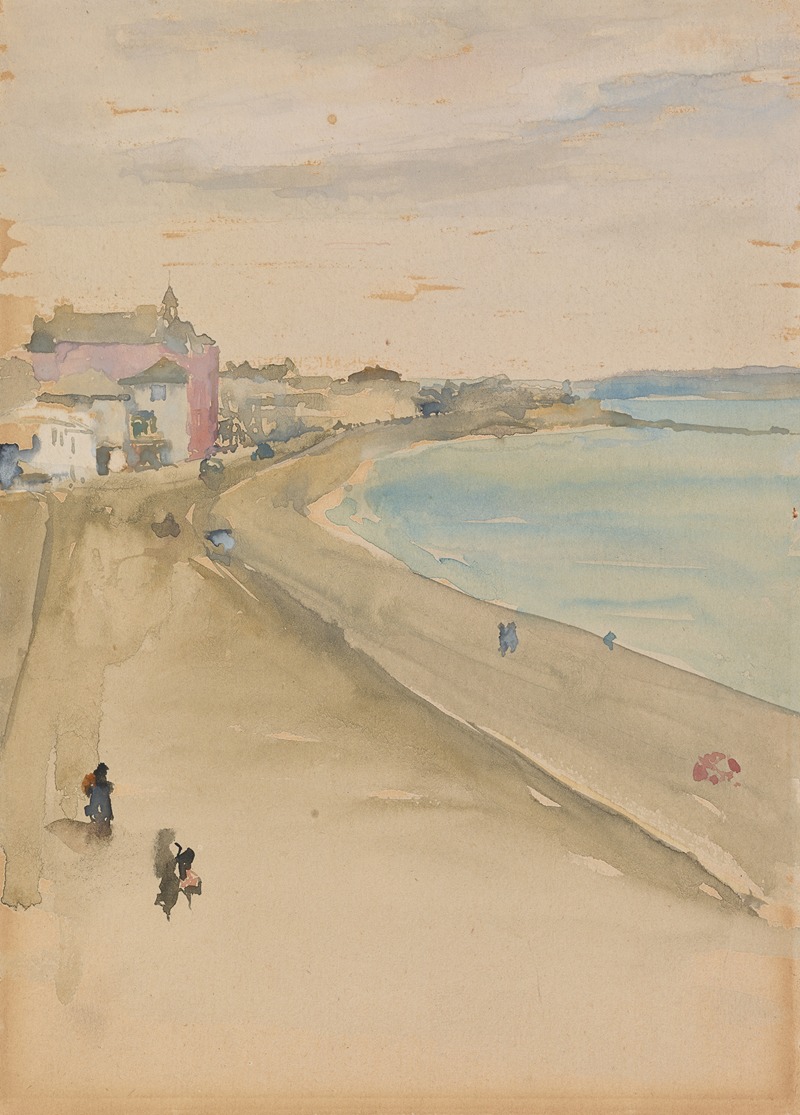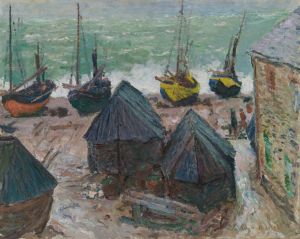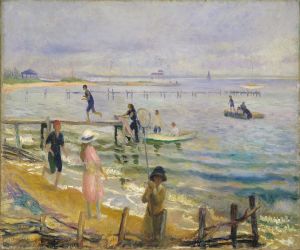
St. Ives; Cornwall
A hand-painted replica of James Abbott McNeill Whistler’s masterpiece St. Ives; Cornwall, meticulously crafted by professional artists to capture the true essence of the original. Each piece is created with museum-quality canvas and rare mineral pigments, carefully painted by experienced artists with delicate brushstrokes and rich, layered colors to perfectly recreate the texture of the original artwork. Unlike machine-printed reproductions, this hand-painted version brings the painting to life, infused with the artist’s emotions and skill in every stroke. Whether for personal collection or home decoration, it instantly elevates the artistic atmosphere of any space.
James Abbott McNeill Whistler, an influential American artist, is renowned for his contributions to the art world during the late 19th century. His work, "St. Ives; Cornwall," is one of the many pieces that showcase his distinctive style and artistic philosophy. Whistler was known for his belief in "art for art's sake," emphasizing the aesthetic experience over narrative content.
"St. Ives; Cornwall" is a painting that captures the scenic beauty of the coastal town of St. Ives in Cornwall, England. This location was a popular destination for artists during Whistler's time, known for its picturesque landscapes and unique quality of light. Whistler's depiction of St. Ives reflects his interest in capturing the atmospheric effects and mood of a scene rather than focusing on detailed realism.
Whistler's approach to painting was heavily influenced by his exposure to various art movements, including Impressionism and Japanese art. His work often features a harmonious arrangement of colors and a focus on the overall composition, which can be seen in "St. Ives; Cornwall." The painting likely employs a subtle palette and delicate brushwork, characteristic of Whistler's style, to evoke the tranquil and serene environment of the Cornish coast.
Throughout his career, Whistler was known for his innovative techniques and his ability to convey emotion through color and composition. His works often feature a sense of harmony and balance, achieved through careful consideration of form and color. In "St. Ives; Cornwall," these elements come together to create a work that is both visually pleasing and evocative of the natural beauty of the area.
Whistler's time in England was marked by his interactions with other artists and his involvement in the art community. He was a prominent figure in the Aesthetic Movement, which advocated for the appreciation of beauty and art for its own sake. His works, including "St. Ives; Cornwall," reflect this philosophy, focusing on the visual and emotional impact of the artwork rather than its narrative content.
In addition to his paintings, Whistler was also known for his etchings and lithographs, which further demonstrate his skill and versatility as an artist. His influence extended beyond his own work, impacting the development of modern art and inspiring future generations of artists.
While specific details about the creation and exhibition history of "St. Ives; Cornwall" may not be extensively documented, the painting remains an example of Whistler's mastery of capturing the essence of a scene through his unique artistic vision. His work continues to be celebrated for its contribution to the art world and its embodiment of the principles of the Aesthetic Movement.
Overall, "St. Ives; Cornwall" is a testament to Whistler's ability to transform a simple landscape into a work of art that resonates with viewers, inviting them to appreciate the beauty and tranquility of the natural world.


















